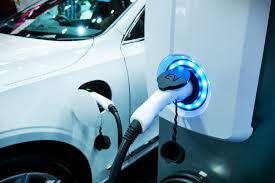Clean and silent urban streets with zero-emission
The air we breathe becomes more toxic due to the CO2 increase. The governments Worldwide are giving more attention to the environment, understanding the urgency of reducing pollutants agents to protect the territory and the quality of life.


The air we breathe becomes more toxic due to the CO2 increase. The governments Worldwide are giving more attention to the environment, understanding the urgency of reducing pollutants agents to protect the territory and the quality of life.Research and development of new technologies with low environmental impact have been accelerated worldwide to meet the increasingly felt need to limit CO2 emissions in the air.
The future is electric. Yes, this is what every green environment advocate says, however it is time we define when this will come to actualization. Many auto industries have come up with plans to manufacture electric cars, Tesla is the leading giant in the EV having so many cars that are powered by electric, the rest have followed the path of electric and we can now say the future is near.
A study across the US, UK, France and Germany showed that congestion on our roads is costing the economy on average almost one percent of GDP. This is not only holding back our economies through lost time and productivity, but also harming our health and the environment through worsening air pollution. Recent data shows that dirty air leads to almost 4.5 million premature deaths a year and afflicts many more, particularly children, with illnesses such as asthma.
United Nation (UN) is putting efforts to ensure more countries adopt to the electric tune. The organization says urban buses account for approximately 25% of the carbon that is emitted by the transportation sector. Therefore their prediction is to have close to 50% of electric buses by the year 2030.
Electric cars are clean, cheaper to run and available today. But the lack of a charging stations could be reason that is holding back the market. EV stakeholders need to come together together with partners to find a solution in order to have more electric cars on the road.
UN Environment seeks to address the significant emissions and public health burden of urban bus fleets by supporting soot-free engine technologies, including electric engines. They are also working with the International Council on Clean Transportation (ICCT) and regional partners, whereby UN Environment provides technical and policy support to identify barriers, to undertake activities that can remove such barriers, and support the subsequent design and adoption of a public commitment to cleaner buses. While the partners have a plan of activities that are to be implemented over a 3 year period aimed at securing commitments from city officials to shift to cleaner buses, and supporting the implementation of these commitments.
Africa has not been left behind in the EV scramble, however there are unique challenges found in this continent, such as the increased risk of power surges for example, but these can be protected by wiring in a power surge protector. The whole continent could not be supported with enough electricity were everyone to switch in the next couple of years. But like any big changes, they come in waves and not one big tidal wave. A continual progression is needed to drive any change. The introduction of mobile phones enabled many Africans to have access to a ‘computer’ and the transition was much faster than previous continents. The transition to electric cars could also be an accelerated transition. The reduction in the daily cost of motoring makes it more accessible too. In time, the introduction of hybrid and electric cars will filter into the broader car owning population.
If the African continent wants to be fully electric there is a need to adopt to new technologies. This will drive the dealers to have the software required readily available. If we’re moving to a world where cars can be fixed via software updates, then we’re moving to a more standardized solution. A better service provision for everyone, which naturally will be adopted more broadly once people are convinced that the vehicles can be supported and maintained. Lower costs of motoring, reduced environmental impact and better servicing from the dealerships, it all adds up to a newer better solution for us all to enjoy.
For countries like Kenya, Zambia, Tanzania, Botswana, and Zimbabwe that drive on the side of the road, used EVs like the Nissan Leaf, the Mitsubishi IMIEV, Peugeot Ion, Citroen C Zero, and the Renault Zoe can be sourced from the United Kingdom and Japan. Buyers with a bigger budget can also look at the Mercedes B Class Electric Drive, the VW eGolf, the Kia eSoul, and the Hyundai Ioniq. Those with an even bigger budget can look to bring in the Tesla Model S/X and even low mileage Model 3s. Used Tesla Model S/Xs have been spotted in Mauritius and Zimbabwe.




